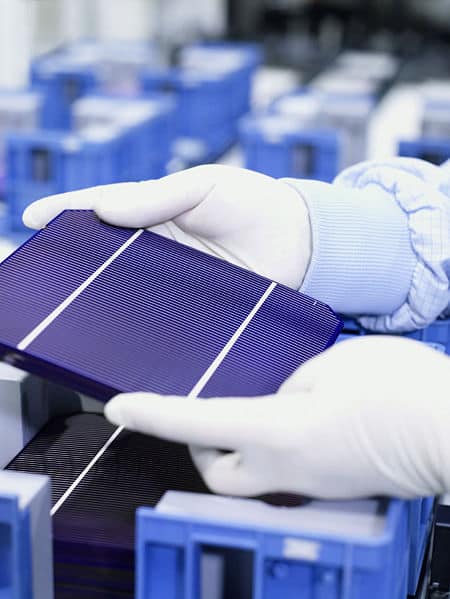A team of researchers from North Carolina State University and the United Kingdom discovered that the low energy conversion rate in solar cell technology consisting of only polymers originates from the structure of the solar cells themselves

A team of researchers from North Carolina State University and the United Kingdom discovered that the low energy conversion rate in solar cell technology consisting of only polymers originates from the structure of the solar cells themselves. The researchers hope that their findings will lead to the development of more efficient solar cells.
Polymer-based solar cells consist of thin layers of interlocking structures that originate from two different conductive plastic materials, and are very common thanks to being cheap and thanks to the ability to embed them on a variety of surfaces. However, such solar cells are still not commercially viable since their energy conversion rate is only three percent - compared to 20-15% in other existing solar technologies.
"Solar cells need to be both thin enough to absorb photons from sunlight, and have structures small enough to allow the energy trapped in them to move towards the charge separation site and become usable electricity," said Dr. Harald Ade, professor of physics and one of the authors of the paper describing the research, which was published In the scientific journal Advanced Functional Materials and Nano Letters.
"The solar cells capture the photons, but the elements that carry this energy (excitons) have to travel a long way, the interface between the two different plastic layers is too thick for effective charge separation and their energy is simply wasted on the way."
In order for the solar cell to operate with the highest possible efficiency, the researcher says, the layer that absorbs the photons should be only 150-200 nanometers thick. In addition, the energy carrier, the exciton, has to travel a distance of only ten nanometers before the charge is separated. The form in which polymeric cells are currently organized prevents the realization of this process.
The researcher explains: "In the system we tested, the minimum distance that the energy carrier had to travel was 80 nanometers, which is the size of the structures found within the thin layer. In addition, in the way these systems are currently manufactured, the interface between the structures is not clearly defined, which leads to the fact that the excitons, or charges, are trapped along the way. Therefore, it is necessary to develop new production methods with the help of which smaller structures and sharper interfaces will be obtained."
The research team plans to test different types of polymer-based solar cells to see if their low efficiency stems from the same structural problem. They hope that their information will lead chemists and manufacturers to explore different ways to design solar cells more efficiently.
"Now that we know why the current technology isn't working as well as it could, our next steps will be to test the physical and chemical processes that can fix these problems. Once we get increased efficiency, we will be able to reorient research and production efforts."

5 תגובות
563694 444959 For anyone who is interested in environmentally friendly items, may possibly surprise for you the crooks to maintain in mind that and earn under a holder basically because kind dissolved acquire various liters to critical oil to make. day-to-day deal livingsocial discount baltimore washington 121447
It is not clear to me how excitons contribute to the current? To get a current, the exciton must be separated into an electron and a hole, then the free charges will contribute to the current. Why are the researchers trying to increase the conductivity of the excitons?
Leshahar - it is written (and known) that the utilization of solar cells today reaches 15-20%, and you want to reach 10%!!!!!!!
We strive to move forward and not go back!!!!!!!!!!
From all the studies and articles I've read (I've read a lot), this study seems to be the "real thing" and with a real possibility to promote the utilization of solar energy.
As someone who has a number of panels at home and loves the field, it is actually very gratifying to read such an article.
And I just hope that the improvement will come quickly.
The realistic forecast: within 7 years it will be possible to reach 10 percent efficiency at today's prices. Then the price per kilowatt will be very competitive. less subsidy.
Research in an important direction